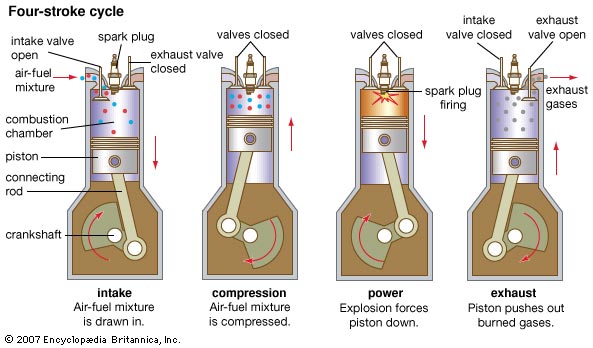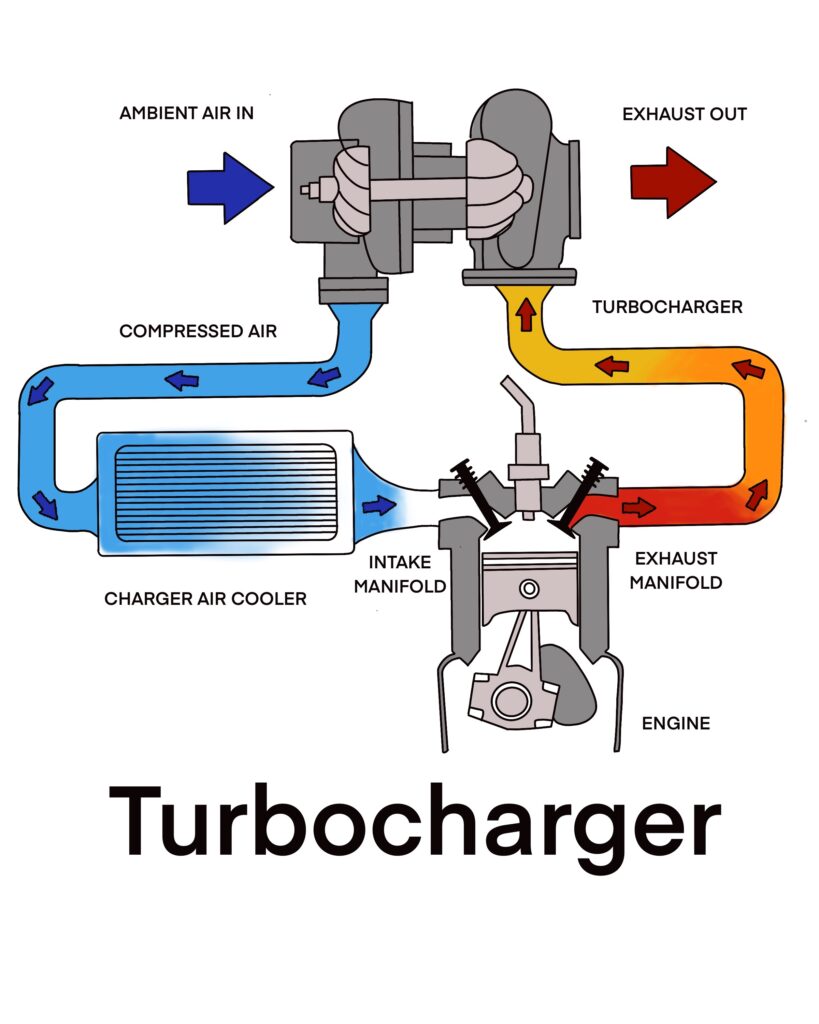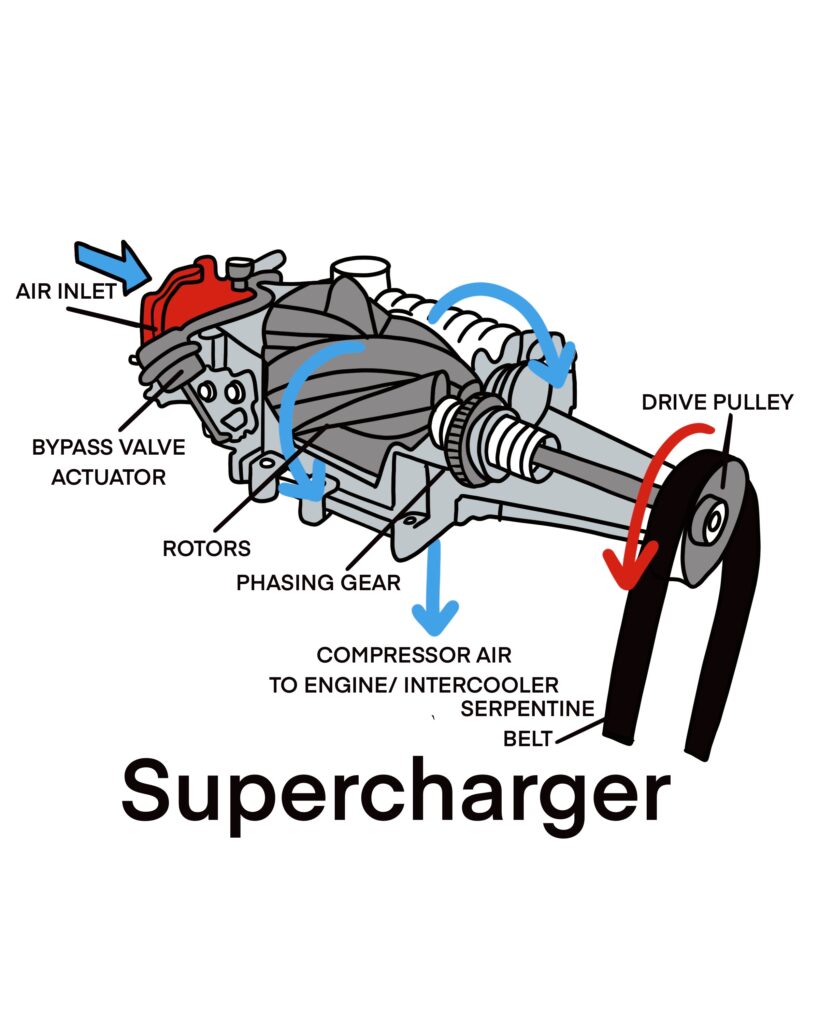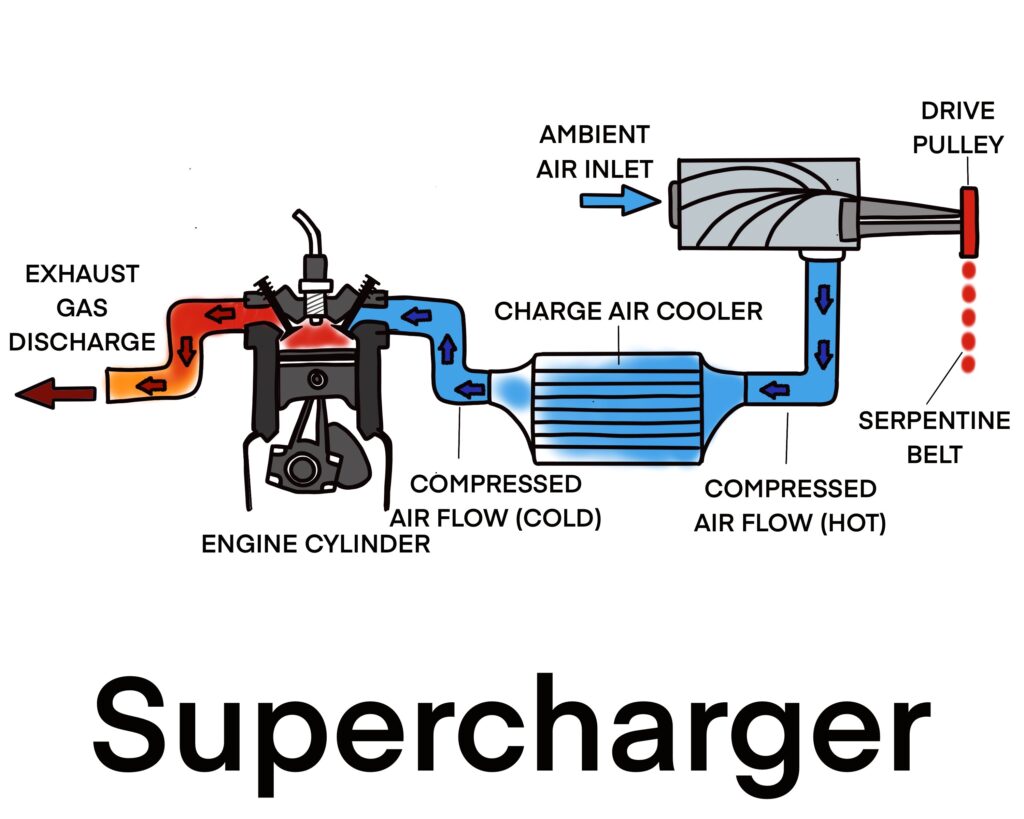Superchargers vs. Turbochargers

By Ally Chisenhall
There are two types of “knowledgeable” people in this world – those who memorize a ton of information and those who understand it down to its core. For some, the first option is simpler – and you can certainly pull off an intelligent conversation with that information – but I challenge you to try to be the latter. For some people, the latter is the only thing that is natural. For example, there was no way I was going to remember off hand what an alternator does by just memorizing it; I had to learn that an alternator converts mechanical energy to electrical energy in the form of alternating current – aha! Now that I understand it, it’ll be stuck in my brain permanently. Why am I telling you this? Well, because this article is the first of a series I plan to do on getting down to the basics, the design and engineering of these terms and products that we throw around in conversation all the time in the automotive world. First up – what in the world is the difference between a turbo and supercharger?
Before I start diving into the differences, let’s talk about what these things do in the first place. Turbochargers and superchargers are both used to create more power than a typical naturally-aspired (or normal!) engine. If you are not familiar with how an engine works, let’s break it down here quickly. First, you have cylinders where the internal combustion takes place. Basically, I kind of picture syringes if someone is giving a cat (two-cat mom right here!) or a baby some liquid medicine. Now, imagine this. What if your syringe needed half pink medicine and half blue medicine in one, so the syringe has two sources to draw from at one time based on the set up? When the syringe is pulled, the fluid is pulled in. This is how fuel and air get into the cylinder of your engine. The “pulling” of the syringe isn’t from your hand though, it’s from the crank shaft (the long rotating “rod” going through the center of your engine through to your transmission, interconnecting your vehicle’s major systems together). Once the fuel and air mix in the cylinder, the crankshaft continues to move and push the syringe as to “empty it”, except this time, the valves to the source of the fluid are closed. With no way out, this compression, combined with a spark, causes an explosion and voila, the piston (that thing that moves inside the cylinder to expand or decrease the usable space) is pushed back out, turning the crankshaft.

So, now that we know how typical engines work – what do turbo and superchargers do? The principle is simple – if we can get more oxygen into a cylinder at a given time, the combustion will be greater, more powerful, and burn more fuel (completing more “work”). How do we know that’ll work? Well, because I am a chemical engineer and can’t help myself, I thought this might help make some sense of it:

If you’re not used to chemical equations, don’t panic! Read it left to right like you would a sentence. Now the first jumble is another way to say gasoline. The second set of letters, as you may guess, just means oxygen! So, gas and oxygen on the left, when combined, gives you CO2 and H2O on the right. We know H2O is water (though here it is in gaseous state because it is hot in there!), and you guessed is, CO2 is carbon dioxide, the other byproduct of combustion – both of which leave the system through your exhaust.
But, what if they didn’t just leave your exhaust? What if you used that energy from the exhaust and did something with it? I mean, it’s hot, moving gas–why not use it, right? That is what a turbocharger does! And, funny enough, they didn’t name it turbo because it sounded really cool – but rather because it uses a turbine! The gas leaves the exhaust and passes a turbine that turns and drives an air compressor. This air compressor forces additional fresh air into the engine in greater volumes than the engine could pull in on its own. Often times, an intercooler exists along the way to the engine, because, cool molecules are dense molecules, and the denser the molecules the more effective the combustion will be. That part may be a little confusing, right? Take a look at my super-high-tech diagrams below for a visual. On the left, you have a gas, and about 8 molecules in a given space. On the right, you have a liquid, it’s a lot denser, and because of that we are able to fit 28 molecules in the same space! This is what the intercooler does – when it cools down your molecules change from the left to the state on the right. And as mentioned before, we want as much oxygen as we can in that cylinder!
Now that you understand how a turbocharger works, let’s talk about some of its downsides. The number one issue you’ll hear is that turbochargers cause lag. Well, why is that? It actually makes a lot of sense once you understand how it works, which we do! If the turbocharger is driven off of exhaust gases, then we need exhaust gases to use it, which don’t form until the engine has created them — which is why there is a lag. Simple enough, right? So, by now you’re thinking this must mean that superchargers are better if turbochargers are slow. Well, it’s a tradeoff, since turbochargers really are significantly more efficient by using the energy of a waste stream rather than generating energy on its own. To understand this better, let’s cover superchargers.

Superchargers remind me of an AC compressor. They’re installed easily in a similar way (typically) as an engine accessory and work as an air compressor that is mechanically-driven with a belt. The end goal is the same as that of the turbocharger – more air to the engine – and it does just that! Additionally, it usually has an in-line intercooler for the same reason. So, the downside? You’re having to generate mechanical energy to drive this compressor, rather than using energy that already existed from the exhaust, making it less efficient. The upside? A supercharger doesn’t need exhaust gases to start up, so when you initiate it, it works! *show diagram of supercharger*


There are some other small advantages and disadvantages but I feel that only one more is worth mentioning. A turbocharger requires engine oil for lubricating the turbine. Because of this, and the high temperatures it reaches, it degrades your engine oil faster, while many supercharges don’t need any lubrication at all. So, which is better? Well, it depends, do you want something efficient and clever or immediately fast? It’s all preference, but next time someone tries to ask you that question, you’ll have some great talking points to discuss why you think both are pretty cool inventions.